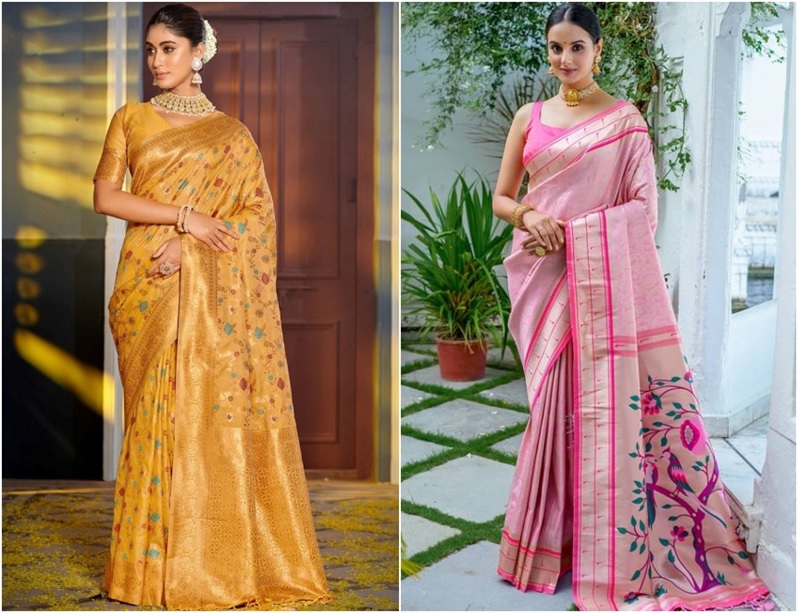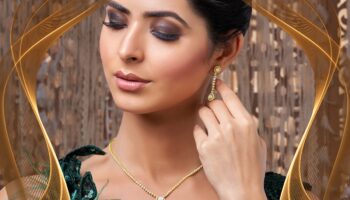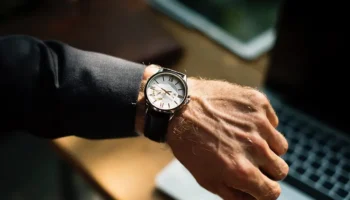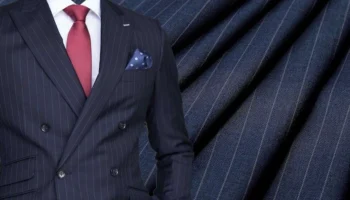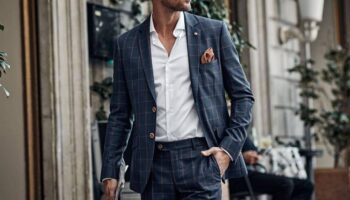We all know that change is paramount and unstoppable. As the time changes, we evolve with it. This applies to the fashion cycle as well. What is in vogue a minute ago is old news by tomorrow. Just like many other fashion ensembles, wedding sarees have transformed as well. The wedding sarees that are in style today are totally different from what was trendy a decade ago. Weddings have remained the same, yet the wedding wear has completely changed. Indian wedding sarees were adorned by brides then and are worn by brides now, however their aesthetics have totally evolved. So how has the humble wedding saree changed over the years? Let’s take an in-depth look at the stylish evolution of wedding sarees.
The Early 2000s: Bollywood and Designer Influences
This was the era when people had their eyes glued to the television screen and would follow every step of the Bollywood stars. Hence Bollywood had a huge influence on the wedding fashion of this era. For example, Aishwarya Rai’s golden kanjivaram saree inspired many. Also, prominent designers such as Sabyasachi, and Manish Malhotra started finding their roots in the fashion industry and created a powerful impact on wedding day fashion. In this period, we saw designer sarees bedecked in Swarovski crystals, heavy sequin work, and stonework. Net sarees became quite popular as well. However, banarasi and Kanjivaram wedding sarees remained a classic choice. Women started gravitating towards modern trends like pre-draped sarees and half sarees.
2010- 2015: The Glitz and Glam Era
The 2010-2015s were all about upping the glamour in a classy way. Brides started opting for pastels such as pink and peach instead of red sarees for their wedding look. Pastels were huge during this time, with markets being flooded with bridal sarees made of chiffon and georgette, all in pastel shades. Floral and resham embroidery on sarees also started trending hugely, and lace borders also started being in vogue. Brides started drifting away from heavy silks and velvets for their big day and instead started choosing fabrics like georgette and chiffon. The design of the blouse was also in focus, and sheer sleeves, high neck, and backless blouses started trending. Thus, these years saw the evolution from traditional wedding sarees to a bit more modern.
2015-2020: Revival of The Classics
This era was all about going back to the basic roots. Trending sarees included bright reds and classy pinks. Classic saree fabrics such as Banarasi and Kanjivaram also made a comeback, with brides preferring a heavy aesthetic and going all over in their wedding looks. However, pastels still remained a favourite and were still the top choice of many a bride. The introduction of saree accessories like saree belts was a huge hit, and brides started taking the accessories worn with bridal sarees a bit more seriously. A huge focus was on jewellery with brides, with many about to be married women choosing to co-ordinate their sarees for weddings with matching diamond or gold jewellery. Handloom sarees also had a huge resurgence, with many brides opting for a boho aesthetic.
2020-2025: It’s All About the Fusion

These years saw young brides shifting their focus towards fusion wear. Fusion looks such as sarees with a jacket or with capes became extremely popular. During this time, classic looks with a modern twist were preferred. Pink as a bridal color became hugely popular. Celebrities like Anushka Sharma, who wore pink on their special day, helped popularize this trend. Florals also came back in fashion with organza and silk sarees covered in floral zari or sequin work were a favorite. Online saree shopping started gaining traction during this era, with women preferring to shop from the comfort of their homes. Thus, these fashionable years were all about trying something new and modern.
2025- Present: Sustainability is At the Forefront
Sustainable saree options are a favorite amongst young women these days as the Save the Earth movement is causing huge waves. Brides are choosing sarees with sustainably sourced fabrics like cotton and linen. They are also opting for sarees made with organic dyes. The personalization trend is huge these days as brides want to create their own unique looks on their special day. Details like adding initials to the saree or wedding dates are in vogue right now, apart from this, sarees that can be repurposed into other garments are hugely popular. There is also a special focus on comfort, with brides wanting to look stylish and comfortable. Lighter materials like Chiffon and georgette are featured in many bridals looks. And, of course, brides are still looking to buy sarees online.
Thus, the history of the evolution of the saree is super interesting and innovative. Having had our fill of the saree history, we can’t wait to see what saree trend pops up next.

